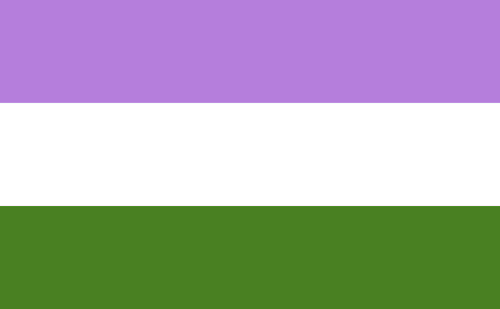An important clarification about gender “umbrella term,” genderqueer
This week’s article is brought to you by the letters GQ. No, I am not referring to the men’s magazine. GQ is also the commonly used abbreviation for genderqueer, an umbrella term for people who identify as a gender other than binary male or binary female. I have chosen to write about this term and its associated community because the genderqueer community is one of the lesser-known and lesser-understood sections of the broader queer community. It is my goal to educate you, dear reader, about those of us who exist outside or in between the gender binary.
One major reason the genderqueer community is not well-known or understood is simply because it is a young community. Concepts of non-binary gender and expres- sion and people who embody those concepts have existed as long as the rest of humanity, but the term genderqueer only came into popular use in the mid-1990’s. Along with popularizing the term gender-queer, authors such as Sandy Stone, Leslie Feinberg, and Kate Bornstein provided a theoretical framework that genderqueer people could use to organize a genderqueer com- munity.
Now that we have established the historical context that allowed the genderqueer community to form, let’s figure out who the genderqueer umbrella covers. As an umbrella term, genderqueer encompasses a number of identities, many of which are not well-known or understood by the rest of society. Genderqueer may be used to describe people who present as or identify with a non-normative gender, i.e. someone who does not identify as a binary male or binary female person.
Some of the most com- mon identities in the gender- queer community are andro- gyne: someone who combines aspects of both man and woman, agender or genderless: someone who does not have a gender or does not experience gender, genderfluid: someone who moves between two or more genders, and genderqueer or non-binary: someone who identifies as a third gender or non-binary gender outside the male/female binary. However, this is not an exhaustive list of genderqueer identities. Every person experiences gender differently, and many gender- queer people have created their own unique ways of being and presenting as genderqueer.
And now it is time to take down some of the myths and misconceptions about those of us who exist under the genderqueer umbrella. The most pernicious myth that I have encountered in both my research and my life as a genderqueer person is the cultural conception that only people who are assigned female at birth can identify as genderqueer or non-binary. There are several cultural ideals that support this myth, which I will do my best to explain and debunk.
Our society is patriarchal and thus privileges masculinity over femininity. Femininity and feminine people are thus cast as the undesirable Other with which we should avoid contact. As a result, masculinity is promoted as the desired outcome and people who identify or present in a masculine manner are privileged. This plays into the myth that only people who are assigned female at birth and present masculinely can or should identify
as genderqueer, because if someone is assigned female at birth and moves from feminin- ity to masculinity, they move from a less-privileged position (femininity) to a more-privileged position (masculinity).
This is not me saying that people assigned female at birth who identify as genderqueer and present masculinely are bad people. They are not; they exist and their gender identities and presentations are valid. However, this is related to another pernicious myth about queer spaces in general: that they are automatically free from misogyny. We must also remember that misogyny can still exist in queer and genderqueer spaces. It is no accident that the stereotypi- cal genderqueer presentation privileges masculinity over femininity, and we be wary of the tendency to privilege masculinity in any variety of gender identity or presentation.
Structural misogyny and in particular transmisogyny (misogyny focused on trans women and transfeminine people) also feeds the nasty myth that someone who identifies as a feminine variety of genderqueer also must be assigned female at birth. Erasure of feminine genderqueer people who were assigned male at birth is not cute, and is a big problem in the queer and genderqueer communities. This is another reason I chose to write about this topic. I am an assigned male at birth, transfeminine genderqueer person. So this is a reminder to the rest of the world that we exist.
So how can you combat erasure of genderqueer people and identities? Y ou can start by recognizing that while the stereotypical genderqueer person is androgynously mas- culine and assigned female at birth, there is no single way to present or identify as genderqueer. And you can also fight erasure by not assuming anything about the gender identities of people you meet. There is more to gender than just male and female, and not all the boys and girls you meet are boys or girls.

